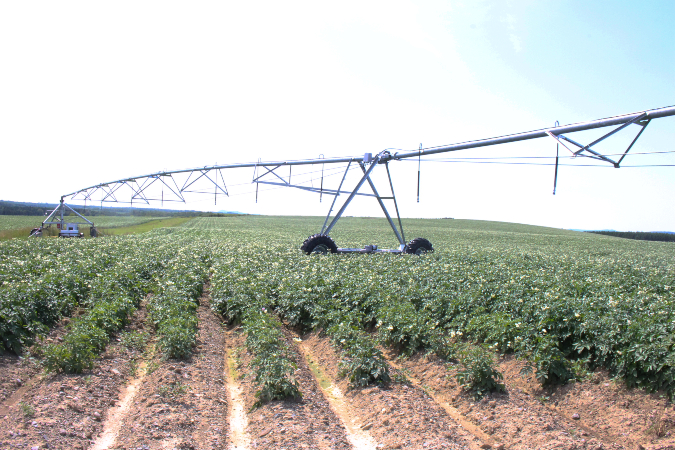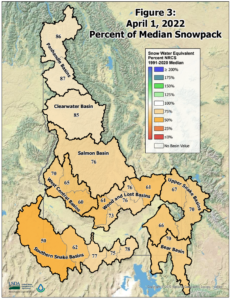
Water concerns abound in Idaho following lackluster snowpack
A strong winter snowpack to fill Idaho’s reservoirs and canals for the 2022 growing season was the hope for the state’s potato farmers following the excessive heat of 2021, which resulted in below-average yields.
That’s not what happened, unfortunately.

According to the April 1 Idaho Water Supply Outlook Report issued by the USDA’s Natural Resources Conservation Service (NRCS), snowpack peaked at 75% of the 20-year average. Snowpack levels were higher in the panhandle region, ranging from 75 to 85% of the average, but lower in the Upper Snake, Southern Snake and Bear Basins, which were in the 60 to 70% range of median averages.
After strong precipitation in early winter, late-winter precipitation fell off. To complicate matters, there was an early thaw that had snowpack melting earlier than normal.
“Much of Idaho is poised to enter another summer below normal streamflow, and concerns about adequate irrigation supply,” the report stated.
Some springtime precipitation would help delay irrigation water usage and prolong the supply, but the prospects of that do not appear good. The National Oceanic and Atmospheric Administration’s Climate Prediction Center forecasts a La Niña weather pattern in the region for late spring, which means below-average moisture and above-average temperatures. The forecast does call for cooler-than-normal temperatures for early spring, however, which could help slow the snowpack melt.
Idaho Farm Bureau Federation President Bryan Searle, a potato, grain and hay grower in Shelley, said growers are “bracing” for the uncertain.
“Nobody is guaranteed to have ample water supply to the end,” he said. “Everyone is bracing for that.”
In Searle’s case, he’s opting to forgo planting potatoes on some acres he’d planned to because it isn’t expected that the nearby canal will have water past June. Others are choosing alternative crops, he added.
“There are some choosing to plant grain because they’re able to get a decent contract price,” he said.
Idaho Potato Commission President and CEO Jamey Higham said there aren’t a lot of answers to be had right now, but there is great trepidation.
“I don’t have any groundbreaking insights, but I can tell you that our growers are very concerned about water this year,” he said.
Washington
While conditions in the Columbia Basin — Washington’s major potato-producing region — have experienced drought conditions, the region’s irrigation water hinges largely on the Columbia River in British Columbia.
“The majority of our water comes from the headwaters of the Columbia River in British Columbia,” said Chris Voigt, Washington State Potato Commission Executive Director. “I think all of those snowpack sites are at normal or slightly above normal snowpack.
“So, we should be good in the Columbia Basin.”
Spring temperatures are projected to be below normal in Washington, with precipitation expected to be in the normal range, according to the most recent Washington Water Supply Outlook Report from the NRCS.







